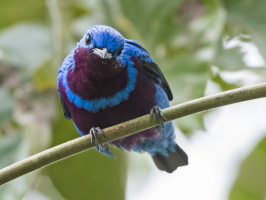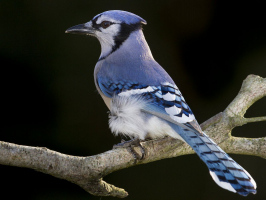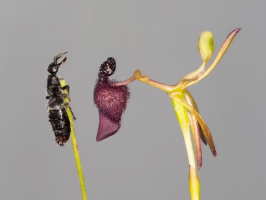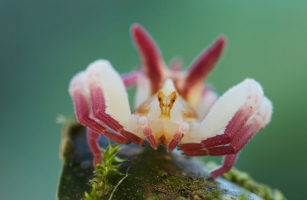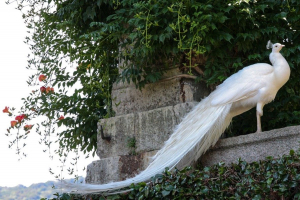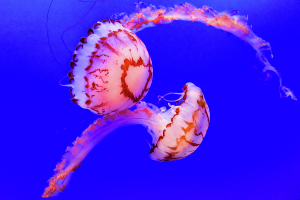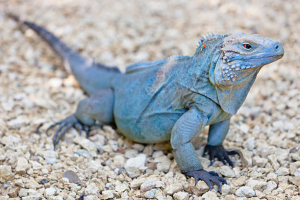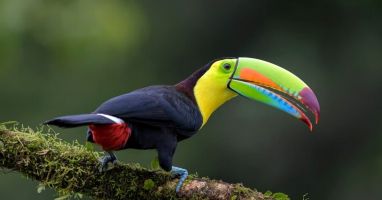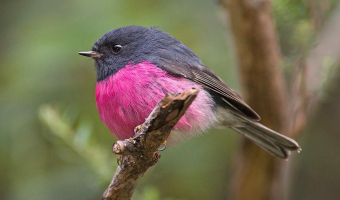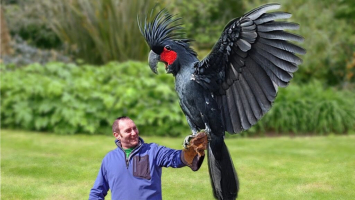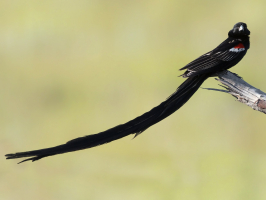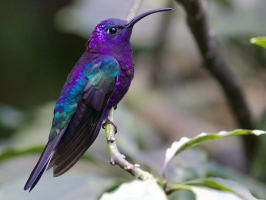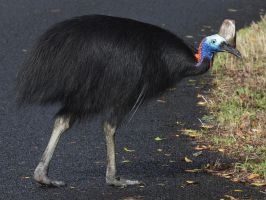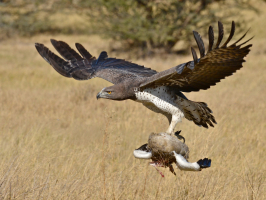Top 10 India's Most Beautiful Birds
India is a heaven if you enjoy bird watching. If you ever desire to feast your eyes and ears with the chirping birds, the wild jungles of India are the ... read more...hotspots. Over 1250 different bird species can be seen while you wander through the bushes. These lovely birds are typically divided into groups based on their biogeographic ranges throughout India. Here is a list of the most beautiful birds in India, let's find out!
-
The Indian Paradise Flycatcher (Terpsiphone paradisi) is a medium-sized passerine bird native to Asia, where it is widely distributed. As the global population is considered stable, it has been listed as Least Concern on the IUCN Red List since 2004. It is native to the Indian subcontinent as well as Central Asia and Myanmar.
Indian paradise flycatcher adults have a length of 19–22 cm. They have glossy black heads with a black crown and crest, a big, robust black bill, and black eyes. Females have a rufous back and underparts and a grayish neck. They have 86–92 mm-long wings. Young boys resemble females almost exactly, but they have black necks and eyes with blue rings. As adults, they produce two primary tail feathers that can reach lengths of up to 30 cm each, resulting in streamers that can be up to 24 cm long. Young males have short tails and are rufous in color. In the second or third year, they grow long tails. Male adults have either a brilliant rufous coloration on top or are mostly white. Some specimens have a degree of intermediate rufous-to-white coloration. The shaft streaks on the wing and tail feathers of long-tailed rufous birds are typically absent, whereas in white birds, the shaft streaks, and occasionally the edges of the wing and tail feathers, are black.
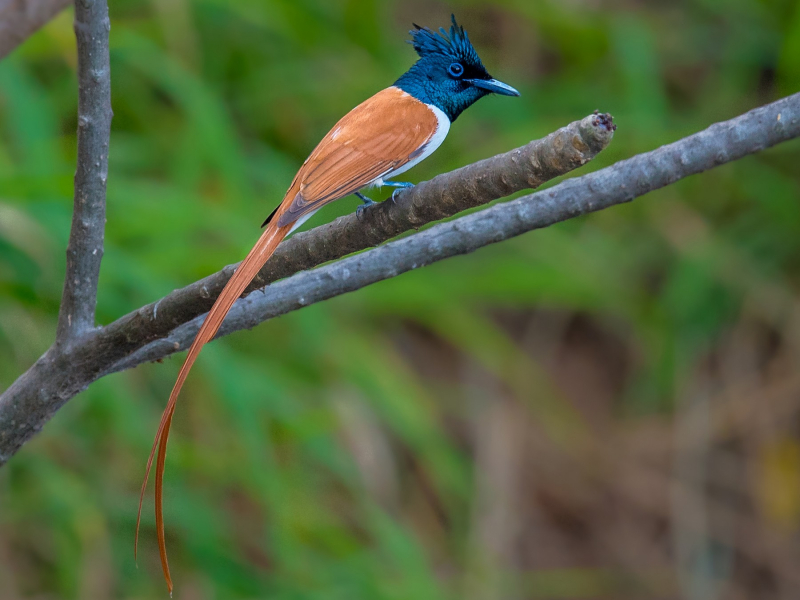
eBird 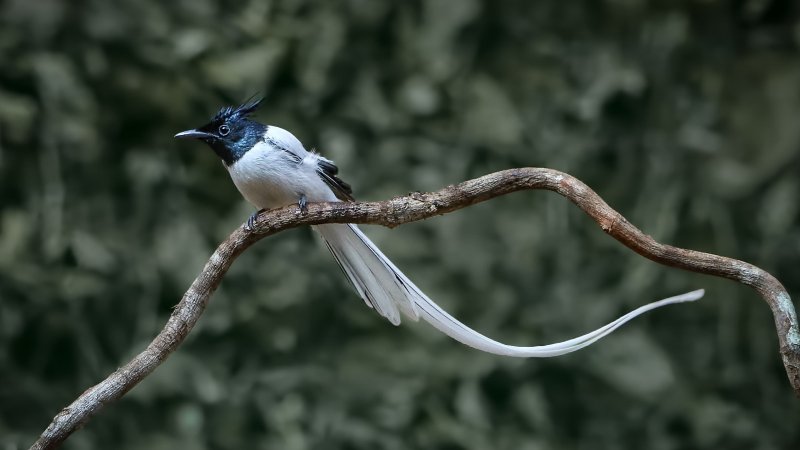
CGTN -
The Fire-Tailed Myzornis (Myzornis pyrrhoura) is a bird species. Its genus Myzornis is monotypic and has recently been placed in the family Paradoxornithidae. The species can be found in India as well as Nepal, Bhutan, China, and Myanmar. Moist montane forests in the subtropics or the tropics are its natural habitat. According to climatic factors and seasonal change, it is a frequent species in the upper ridges of the Sikkim and Arunachal Himalayas, typically between 9,000 ft and 13,000 ft.
A little species of warbler, the fire-tailed myzornis is 11 to 13 cm long and weighs 10 to 13 g. It features brilliant green feathers with black scalloping on the top and a mask around its eyes. The sides of the tail are also red, and the wings are black and white with a brilliant red streak. The bill is long, black, and somewhat curled. The fire-tailed myzornis feeds on insects, spiders, and small arthropods, as well as consuming fruit, nectar, and sap from trees. In India and Nepal, the breeding season is April to June, but the season may be longer in Bhutan, as juveniles have been observed in mid-September.
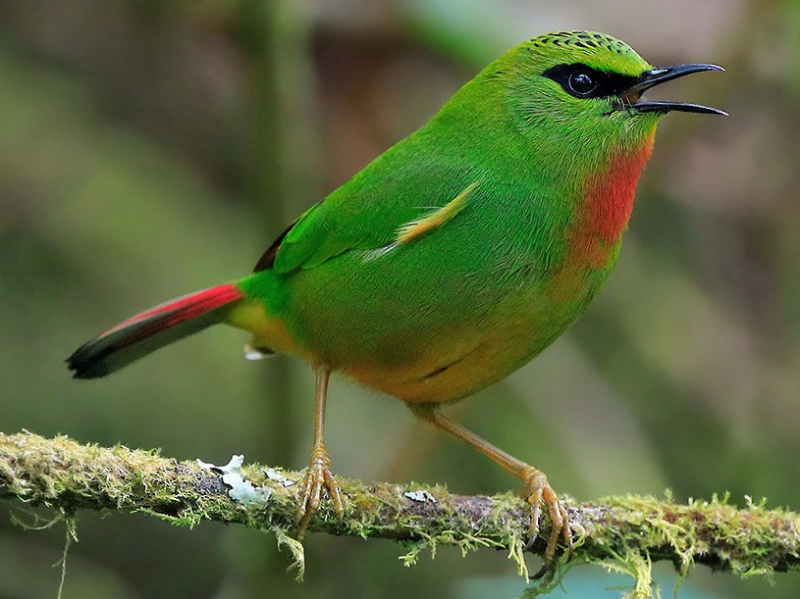
eBird 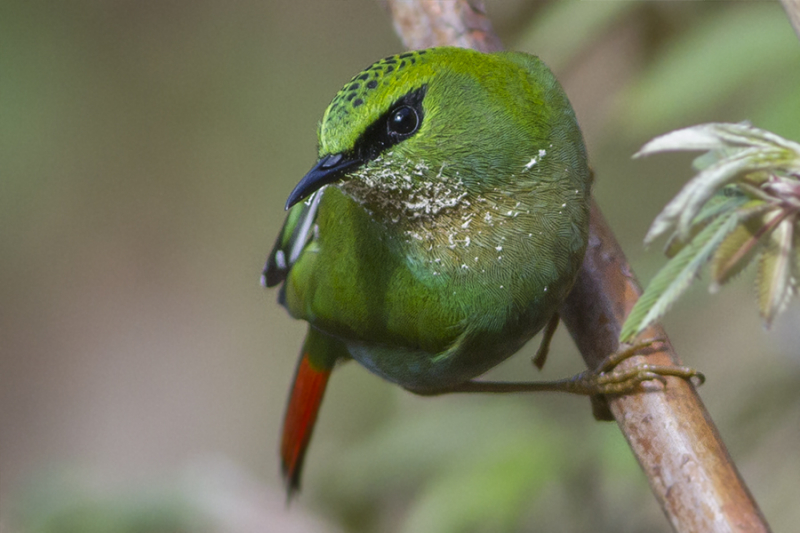
Wikipedia -
The Himalayan Monal (Lophophorus impejanus), also known as the Impeyan monal and Impeyan pheasant, is a pheasant native from Afghanistan and Pakistan through the Himalayas in India, Nepal, southern Tibet, and Bhutan. It is part of the family Phasianidae and is listed as Least Concern on the IUCN Red List.
It is a relatively large-sized pheasant. Its length is approximately 70 cm. Males can weigh up to 2,380 g, while females can weigh 2,150 g. The adult female is more muted in color than the male, who has multicolored plumage throughout. The male has a conspicuous white rump that is most noticeable when the bird is in flight, a long, metallic green crest, and coppery feathers on the back and neck. The lower tail coverts of females are white with black and red bars, while the tail feathers of males are uniformly rufous and get darker toward the tips. The female has a noticeable white stripe along the tail, as well as a white patch on the throat. The first-year male and the juvenile resemble the female, but the first-year male is larger and the juvenile is less distinctly marked.
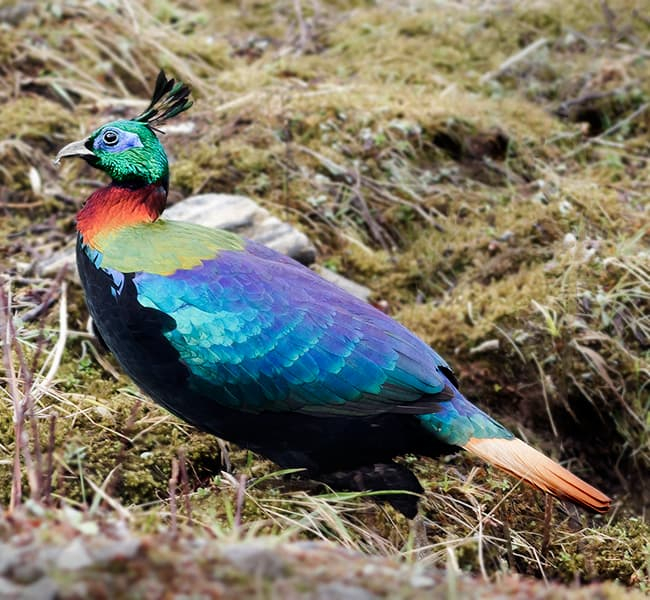
Wikipedia 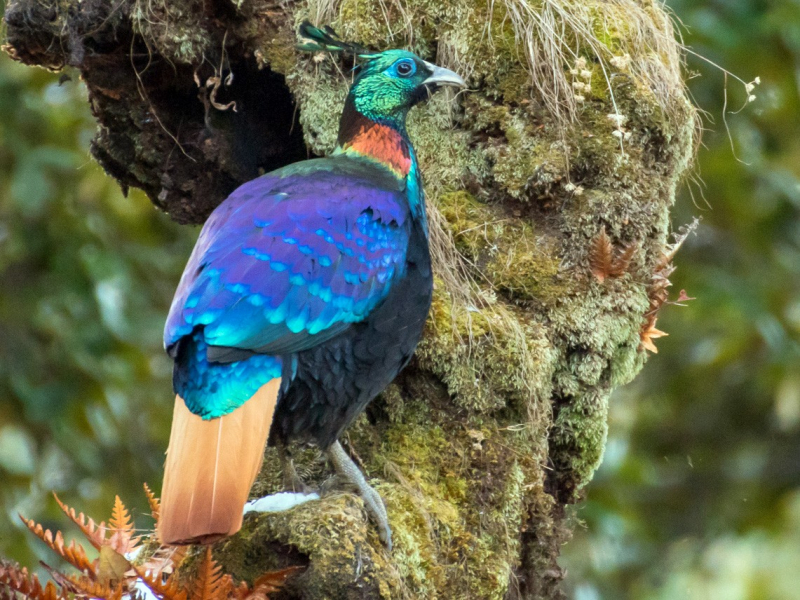
eBird -
The Indian Peafowl (Pavo cristatus), also known as the common peafowl, and blue peafowl, is a peafowl species native to the Indian subcontinent. It has been adopted by numerous other nations. Even though peafowl of either sex are frequently referred to as "peacocks" in casual language, male peafowl is known as peacocks and female peafowl as peahens. The bird is celebrated in Hindu and Greek mythology and is the national bird of India. The Indian peafowl is listed as of Least Concern on the IUCN Red List.
An obvious kind of sexual dimorphism is present in Indian peafowl. The peacock is well recognized for its long train of extended upper-tail covert feathers that contain colorful eyespots. It has a brightly colored, primarily blue fan-like crest of wire-like feathers with spatula tips. During courtship, these stiff feathers are lifted into a fan and quivered. Peacocks can still fly in spite of the size and length of their covert feathers. Peahens lack the train and have a dark brown coat, a white face, and an iridescent green lower neck. The Indian peafowl spends much of its time foraging for berries and grains on the ground in open forests or on land that is being farmed. They also hunt snakes, lizards, and small rodents.
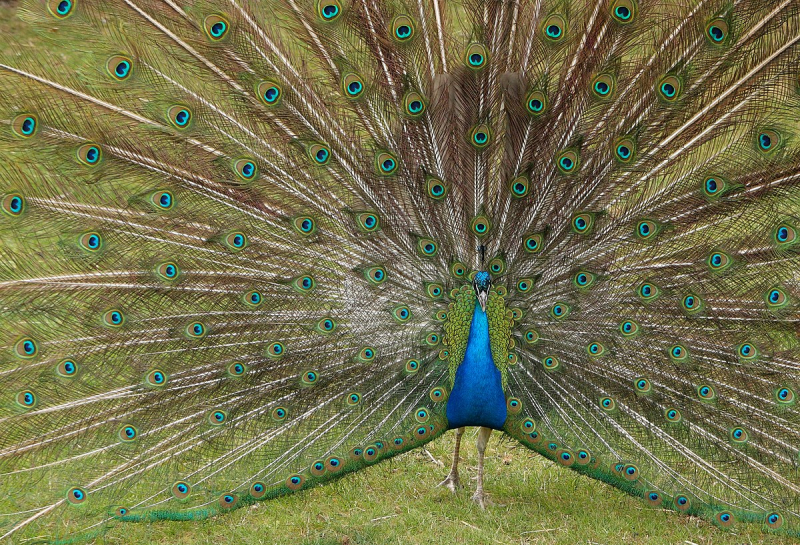
Wikipedia 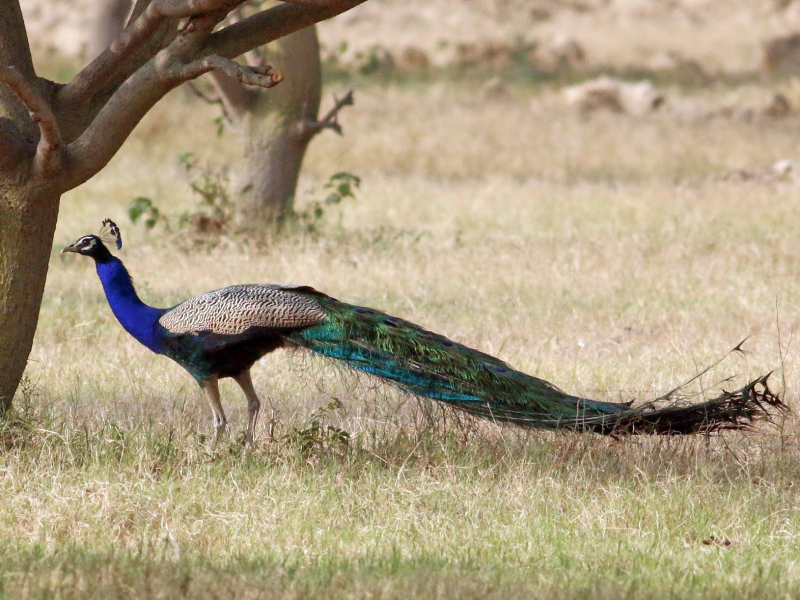
eBird -
The Indian Pitta (Pitta brachyura) is a passerine bird native to the Indian subcontinent. It lives in a deep evergreen forest, deciduous woodland, and scrubby jungle. It breeds in the Himalayan forests and the hills of central and western India, and in the winter it migrates to other regions of the peninsula. Despite being extremely colorful, it normally hides in the undergrowth and is shy, picking insects from the forest floor. At dawn and dusk, its characteristic two-note whistling call can be heard. The IUCN Red List classifies it as having the least concern because of the population's size.
The Indian pitta is a tiny, stubby-tailed bird that is typically seen searching for insects under leaf litter on the forest floor or in areas of dense undergrowth. It has long, powerful legs, a relatively short tail, a robust bill, black coronal stripes, a thick black eye stripe, as well as a white throat and neck. It also has a buff-colored crown stripe. The underparts are buff with brilliant red on the lower belly and vent. The upper parts are green with a blue tail. In order to forage, the bird leaps onto the ground, where it has been known to get caught in traps designed for small mammals. The width of the coronal stripe may vary between the sexes, according to some theories.
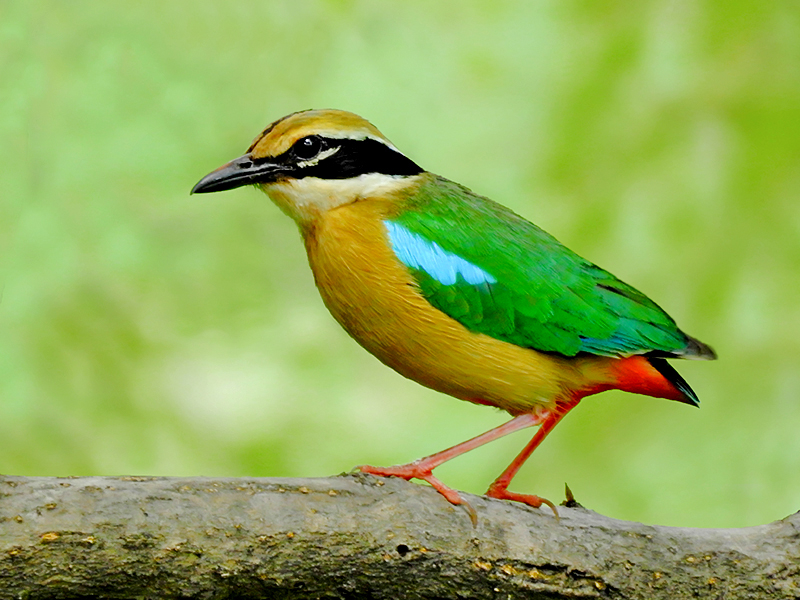
Wikipedia 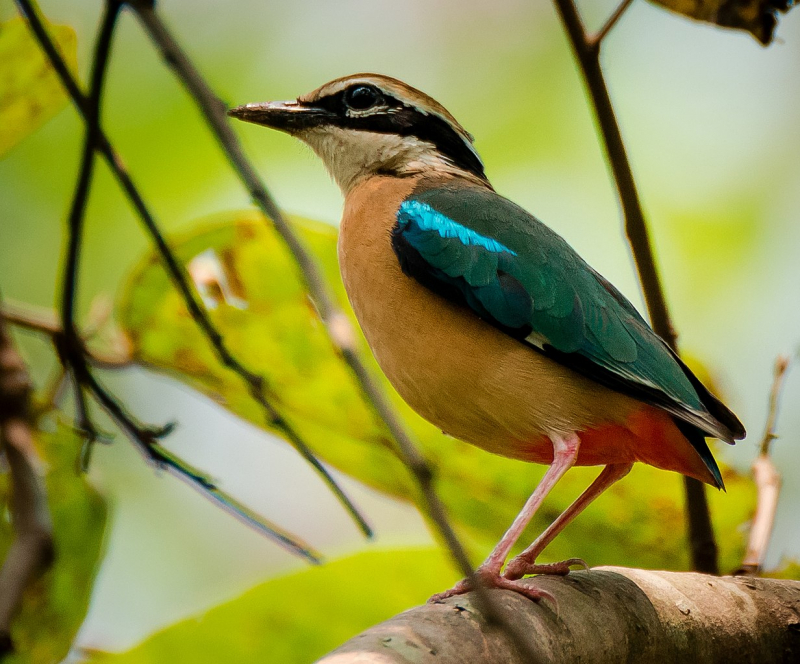
Wikimedia Commons -
Mrs. Gould's Sunbird (Aethopyga gouldiae) is a sunbird species native to forests and shrublands from the southern foothills of the Himalayas to Southeast Asia. They have been widely distributed in India as well as Bangladesh, Bhutan, Laos, Myanmar, Nepal, Thailand, Vietnam, and Southern China. It is found in the evergreen broad-leaved forest, monsoon forest, and deciduous broad-leaved forest at 1000-3500 m above sea level. It is also occasionally found in orchards and bamboo forests within its range.
Mrs. Gould's sunbird is a small sunbird. It has a beak that is downcurved and pointed, as is customary for nectar feeders. The tarsus is typically black, and the iris of the eye has a deep brown color. The male Mrs. Gould has vivid colors. The sunbird's throat, supercilium, and forehead to the crown are all rich violet. Bright red to deep scarlet can be found on the lore, auriculars, malar area, nape, mantle, and side. There could be bright blue markings on the side and auricular. The major feathers' coverts and wing bars are either brown or olive green. Its vent and belly are a yellowish-green color. The tail is bright blue at the base and turns dark purple at the tip. When opposed to the male, the female has a duller color. Deep olive green covers the female's dorsal side, while greyish yellow covers her ventral side.
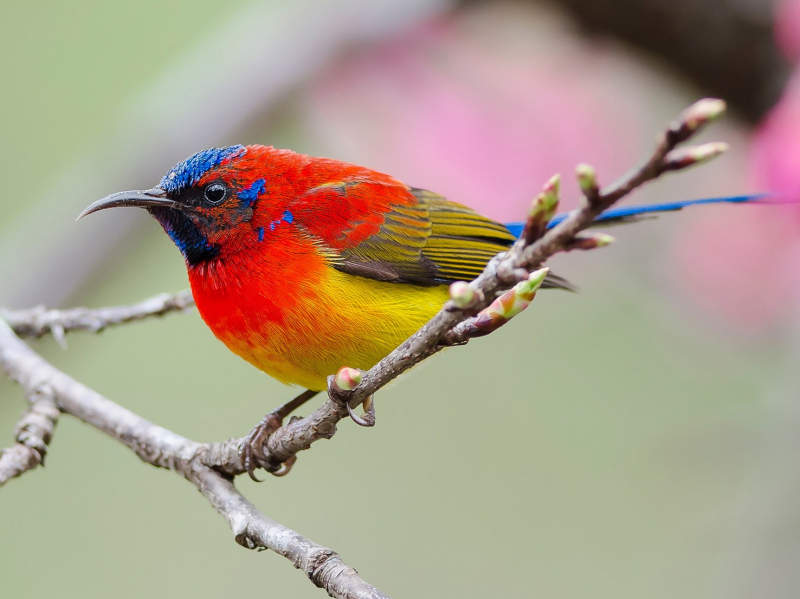
eBird 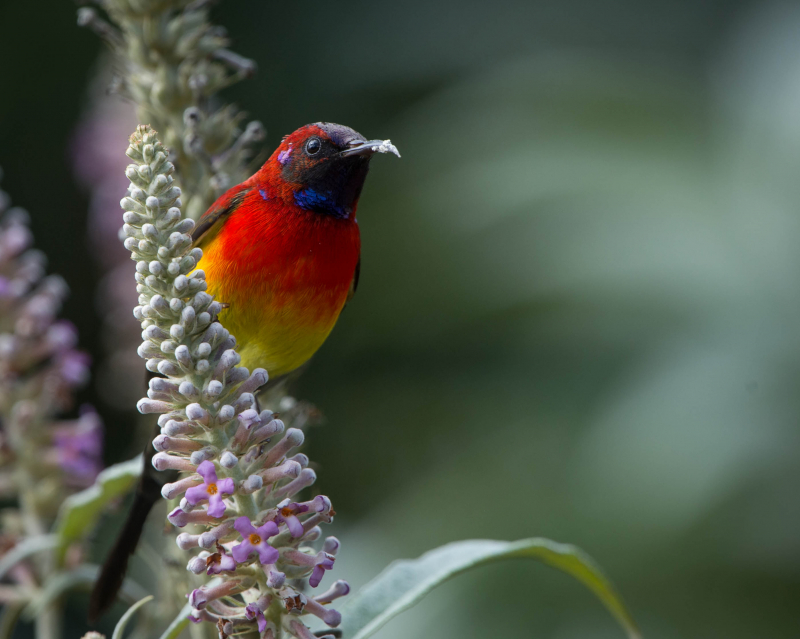
Wikipedia -
The Red-Headed Trogon (Harpactes erythrocephalus) is a species of bird in the family Trogonidae. It is widespread locally in Bangladesh, frequent in Bhutan, and quite common in northeastern India. It thrives in dense broadleaved woods, tropical and subtropical regions, and upland forests in the foothills of the Himalayas. The red-headed trogon feeds primarily on insects and their larvae, including green orthopterans, stick-insects, cicadas, millipedes, flies, beetles, centipedes, woodlice, and moths. It also feeds on leaves and fruits.
Throughout its range, the species' appearance varies, but it always adheres to the same basic color pattern: males have dark red heads and bellies, brown backs, and barred black-and-white wings. The Female has a brown head and a belly that is more faded-red. Both sexes have a tail pattern that is graded, sharply contrasted, and black and white when viewed from underneath.
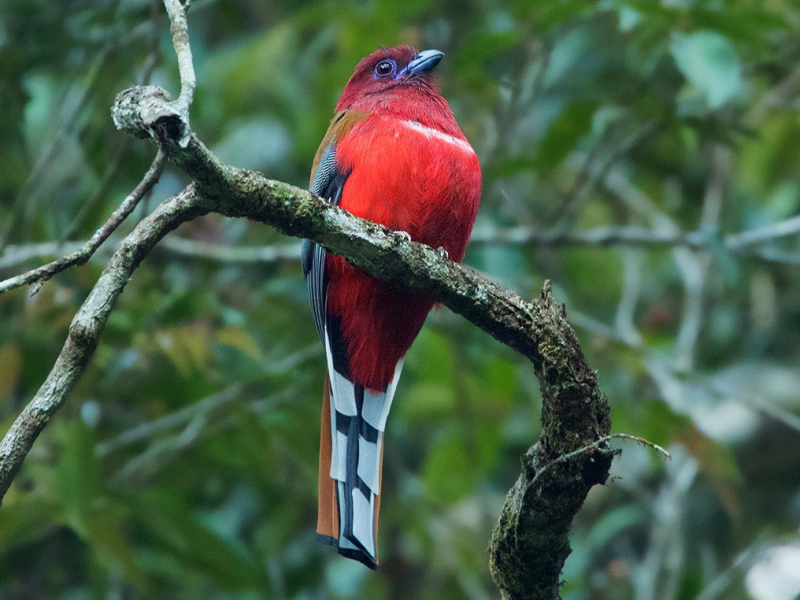
eBird 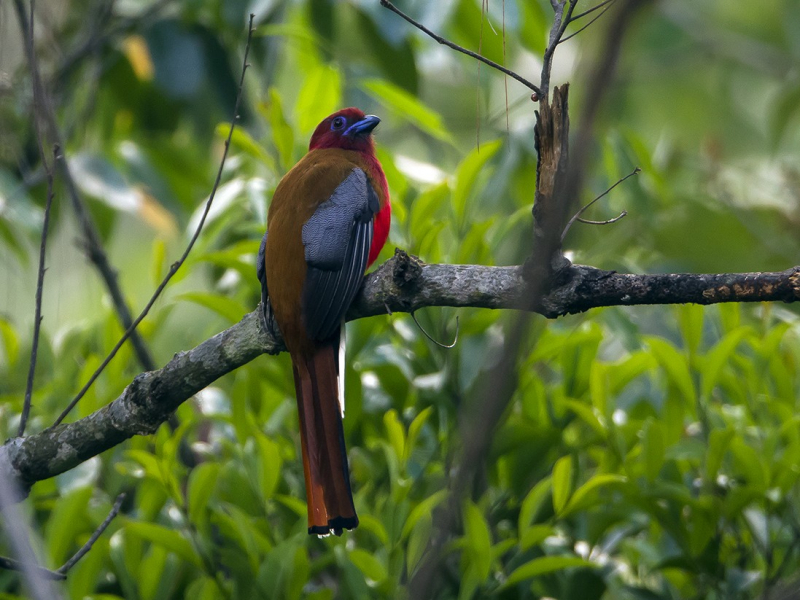
eBird -
The Oriental Dwarf Kingfisher (Ceyx erithaca), also known as the black-backed kingfisher or three-toed kingfisher, is a pocket-sized bird in the family Alcedinidae. The Oriental dwarf kingfisher is a forest and wetland-dwelling species that is endemic across much of the Indian subcontinent and Southeast Asia.
One of the tiniest kingfisher species is the oriental dwarf kingfisher. Its length is 12.5–14 cm, making it only slightly larger than a medium-sized hummingbird (including bill and tail). Sexual dimorphism does not exist, and the two sexes are otherwise comparable. A black spot on the forehead, blue and white patches on the side of the neck, a lilac-rufous crown, rump, and tail, a dark blue back and wings, a white chin and throat, pale yellow-orange underparts, a dark brown iris, and red legs, feet, and a beak are shared by both sexes. In addition to having a white chin, throat, and belly, a yellow-orange bill with a pale tip, blue scapulars, and blue wing coverts, juveniles are duller and have less lilac coloring. This kingfisher species has three toes, which is why it is frequently referred to as the three-toed kingfisher; other kingfishers, however, also have three toes. The toe count in these kingfisher species does not appear to be adaptive.
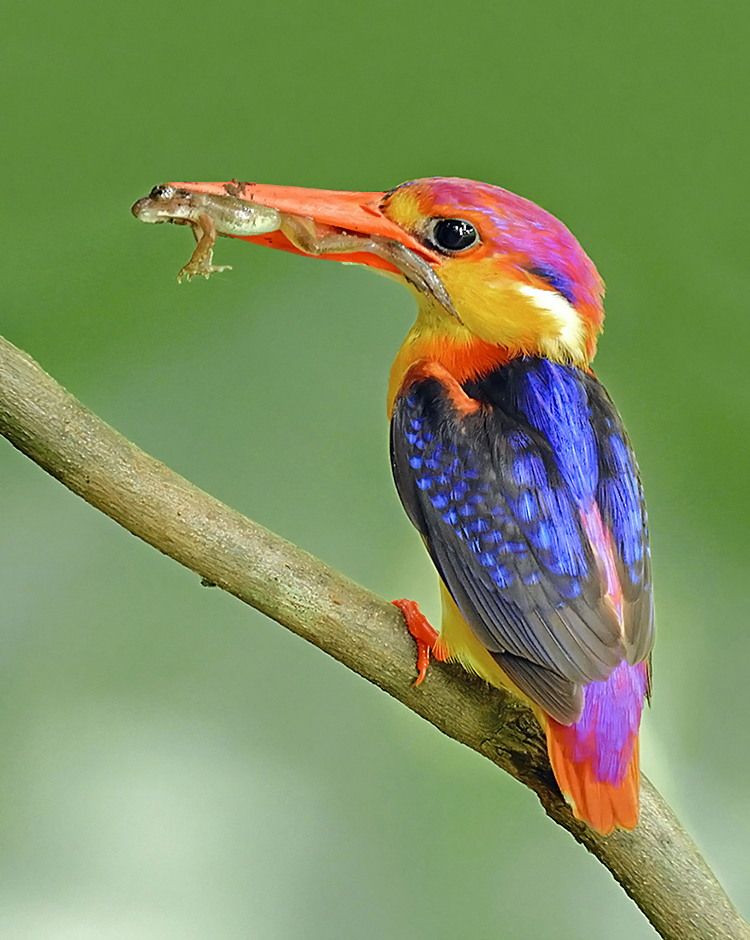
Wikipedia 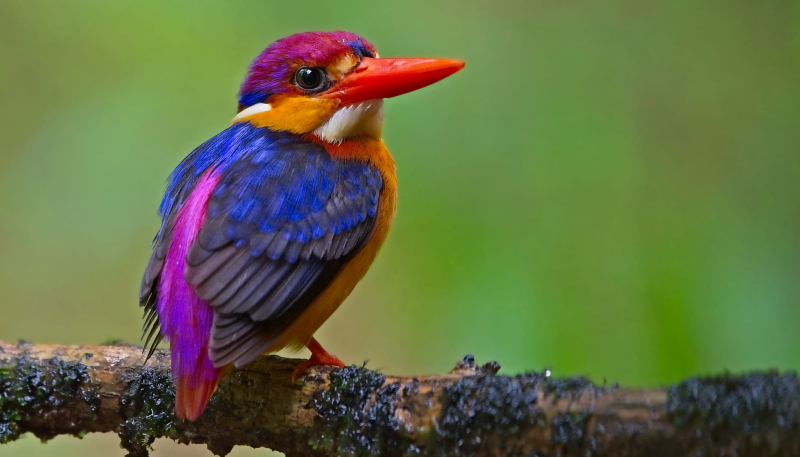
Kidadl -
The Sarus Crane (Antigone antigone) is a large nonmigratory crane found in parts of the Indian subcontinent as well as Southeast Asia, and Australia. The tallest of the flying birds, standing at a height of up to 1.8 m, is a conspicuous species of open wetlands in South Asia, seasonally flooded Dipterocarpus forests in Southeast Asia, and Eucalyptus-dominated woodlands and grasslands in Australia.
The contrasting red head and upper neck of the sarus crane, which is often grey in color, help to differentiate it from other cranes in the area. They hunt for roots, tubers, insects, crustaceans, and small vertebrate prey in marshes and shallow wetlands. They establish lifelong pair connections and defend territories, where they engage in territorial and courtship displays that involve loud trumpeting, jumps, and dance-like movements. They are revered as representations of marital fidelity in India, where it is said that they pair up for life and mourn the loss of their partners to the point of starvation.
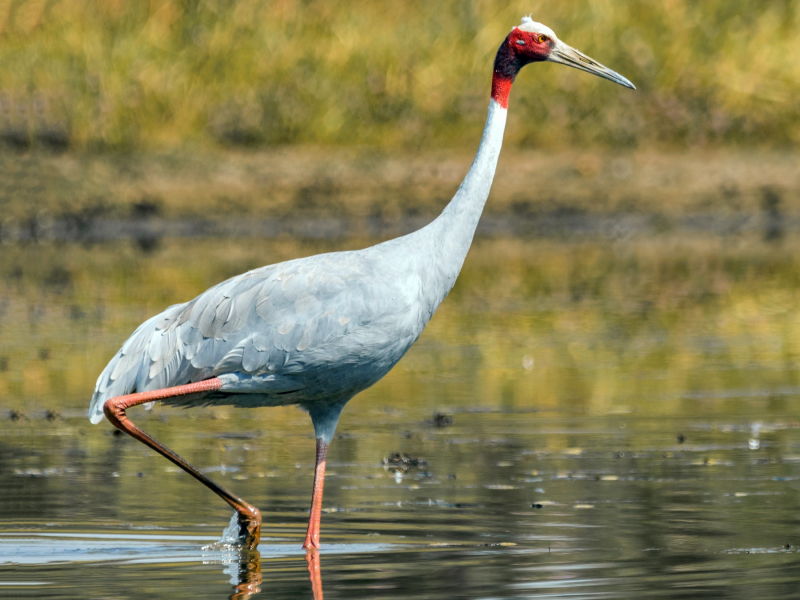
Sarus Crane - eBird 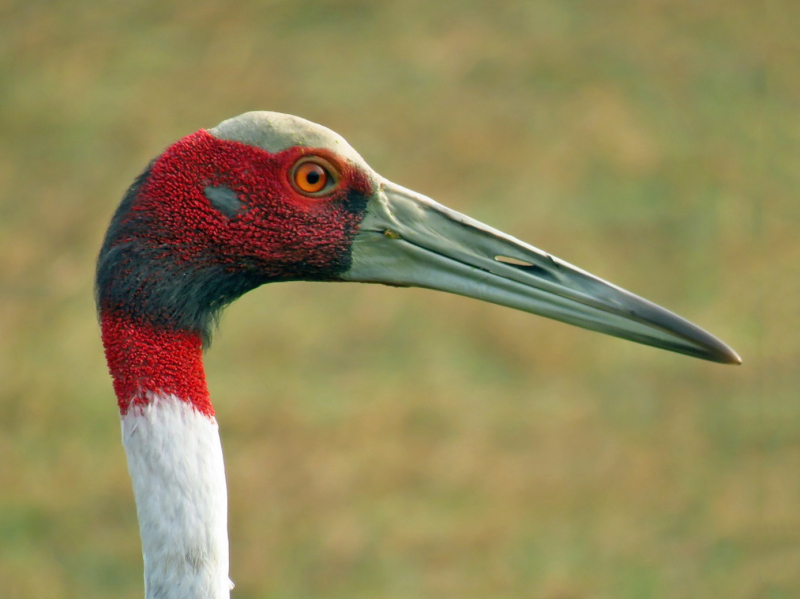
eBird -
The Satyr Tragopan (Tragopan satyra) also known as the crimson horned pheasant, is a pheasant found in the Himalayan reaches of India, Tibet, Nepal, and Bhutan. They live in rhododendron and oak forests that are damp, and there are a lot of bamboo clumps and undergrowth. They are between 2400 and 4200 meters in the summer and 1800 meters in the winter.
Male Satyr Tragopans develop blue horns and a regular wattle during the mating season. They will puff out their horns and hide behind a boulder to wait for females to pass by when they are ready to exhibit. A complex display will be put on in front of the females when one does. The male will stretch out to his full height and display all of his ornaments toward the conclusion of the display. The Male has a grayish-brown back and upper tail, a black face with dark blue cheeks and chin. The male Satyr Tragopan is the only tragopan with white spots on its red breast, however, it has white speckling all over. The female has a similar shape but is entirely brown with reddish-brown wings and fine white stripes on the back. Satyr tragopans are the least endangered of the tragopan species, yet they are still in danger. The population of the species, which is believed to be somewhat small, is vulnerable to hunting and habitat loss across the majority of its range.
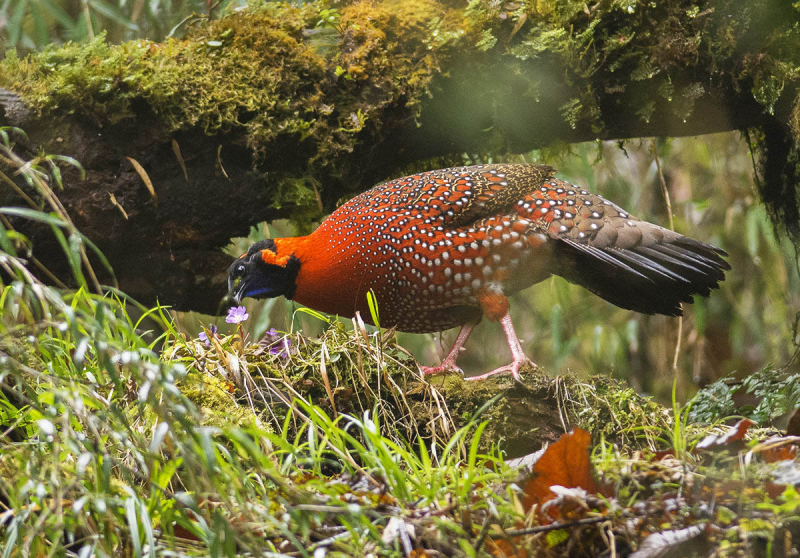
Wikipedia 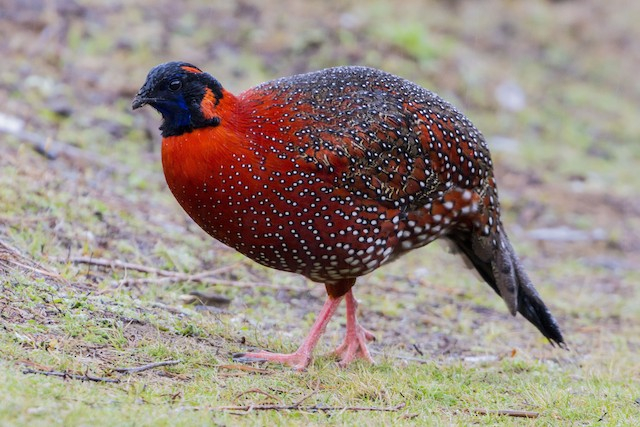
eBird












